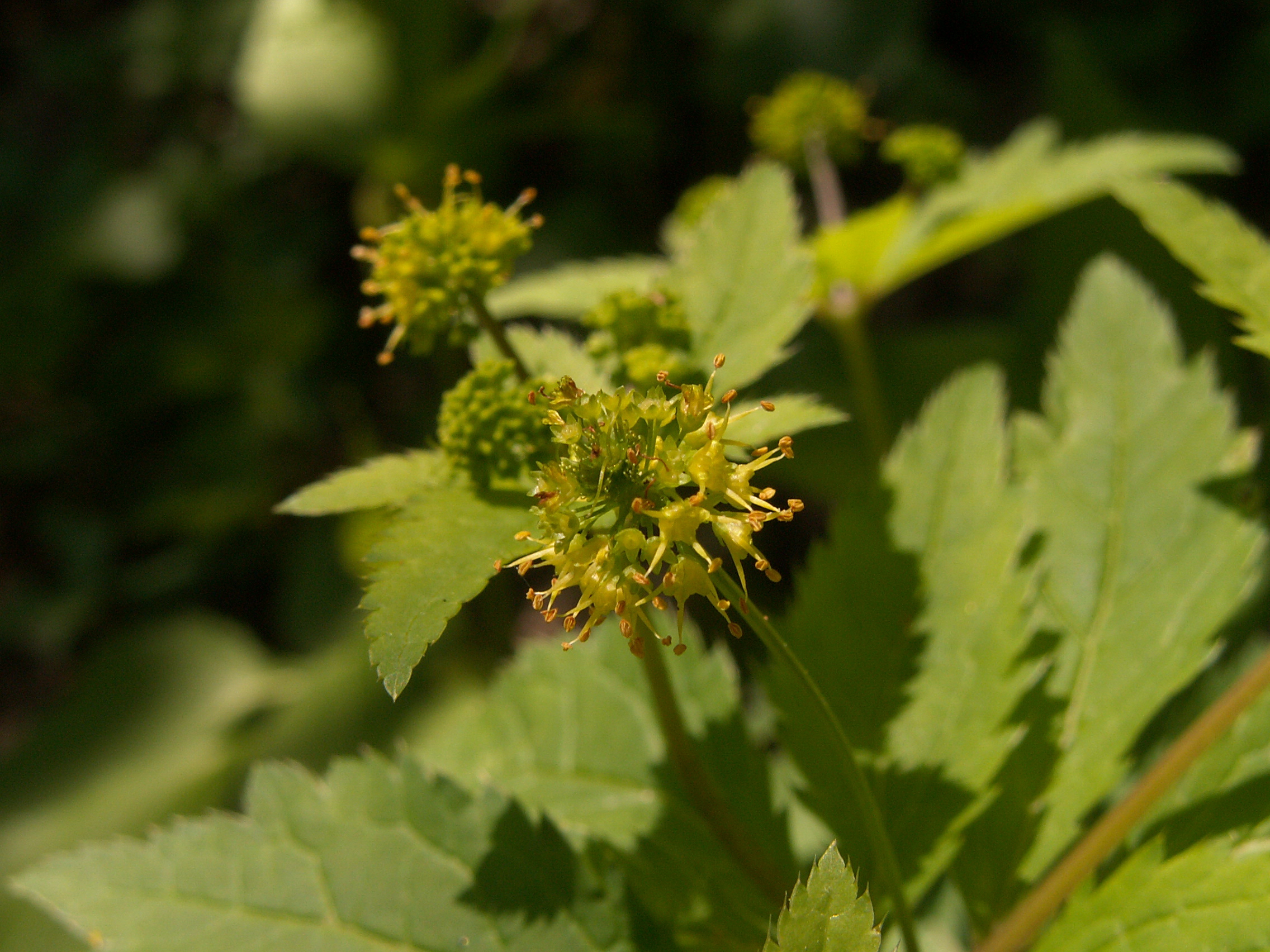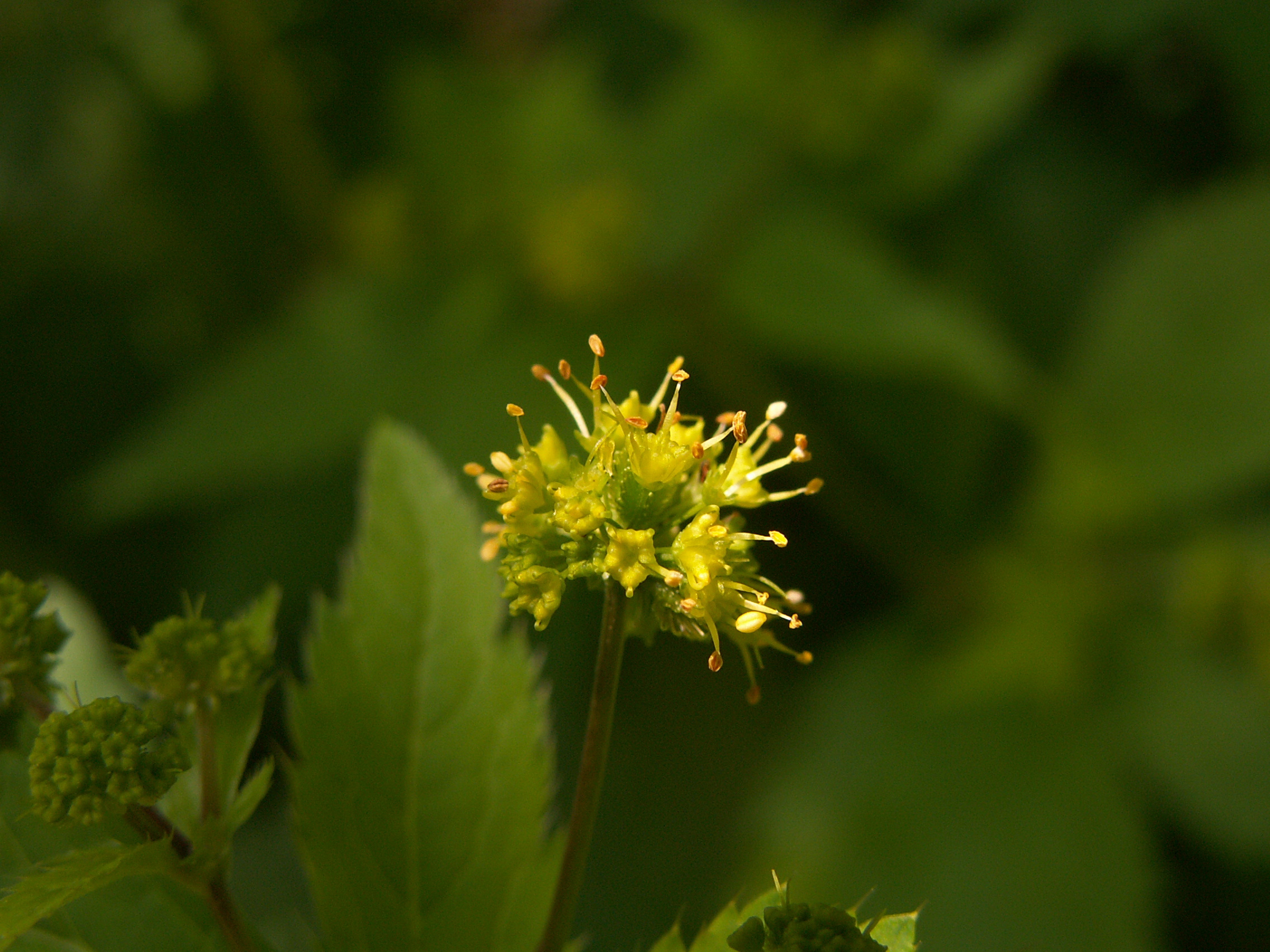It’s harder than it ought to be to find information about this species: many standard wildflower books skip it, but it is abundant in Frick Park, where it forms huge colonies. These plants were blooming in late May. Greenish-yellow flowers with very long (in proportion to the flower) stamens and lower leaves with five roughly equal leaflets are distinguishing marks. Other species of Black Snakeroot around here have white flowers and compound leaves with the lower pair of leaflets split almost to the base.
Gray describes the genus and the species:
SANÍCULA [Tourn.] L. SANICLE. BLACK SNAKEROOT. Calyx-teeth manifest, persistent. Fruit globular; the carpels not separating spontaneously, ribless, thickly clothed with hooked prickles. — Perennial rather tall glabrous herbs, with few palmately lobed or parted leaves, those from the base long-petioled. Umbels irregular or com pound, the flowers (greenish or yellowish) capitate in the umbellets, perfect, and with staminate ones intermixed. Involucre and involucels few-leaved. (Name said to be from sanare, to heal; or perhaps from San Nicolas.)
Styles much exceeding the bristles of the fruit, recurved.
S. gregària Bicknell. Stem slender, 6 dm. high; leaves 5-foliolate; leaflets obovate, cleft and serrate; fruit only 3-4(-6) mm. long, somewhat stipitate. — Rich woods, St. John Valley, N. В.; s. N. H. to Minn., Ark., and Ga.





